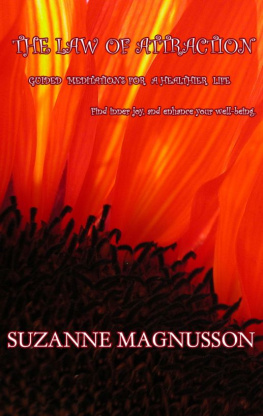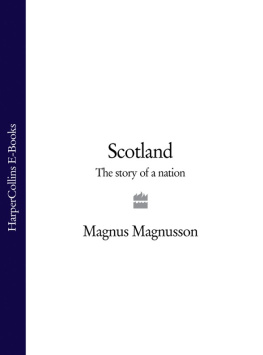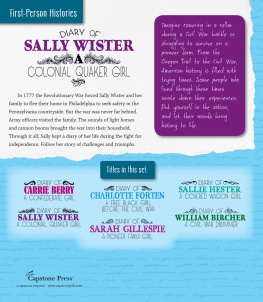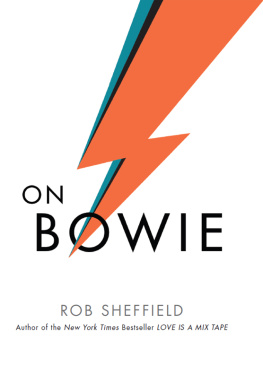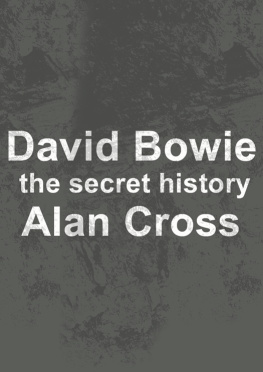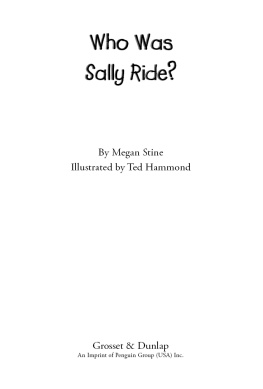
Contents
A
B
C
D
E
F
G
H
I
J
K
L
M
N
O
P
Q
R
S
T
U
V
W
X
Y
Z
Introduction
T HERE WAS A TIME when the faint but unmistakeable whiff of wool mixed with human urine was almost as familiar in the august corridors of Britains House of Lords as pipe-smoke.
Thankfully, this had nothing to do with aristocratic incontinence: their lordships may have been getting on a bit, but in this matter they were blameless. It wasnt even that sort of smell. Nostalgic weavers claim the fragrance that clung to the checked plaids beloved of peers was actually rather pleasant. Lovely is how they remember the designer smell of Harris Tweed.
The people of Harris may not be hugely flattered to hear it was their skill with stale pee that inspired this book, but I found the story spell-binding. What an astonishing thing, this strange alchemy that could conjure from dirty fleeces and old household pee something as sweet to the nose and ravishingly beautiful to the eye as handmade tweed. How wonderful that in the teeming pee-tubs of Harris second from the top in the necklace of jewels we call the Outer Hebrides a tradition which sustained entire economies across Europe for hundreds of years should have been flourishing far into the twentieth century.
And how, well, humbling, that this unremarked substance we are always so desperate to get rid of should turn out to have led a heroic undercover life as one of the most versatile industrial agents on earth.
On Harris I learned that every stage of the cottage tweed industry depended on urine. It fixed and in some cases released the dyes, scoured away the grease and finally shrank the cloth during the time-honoured waulking a process to which every Walker in the phone-book (not to mention Mr and Mrs Fuller and Tucker) owes his or her name. One renowned island weaver was still summoning full chamber pots from her neighbours until shortly before her death in 1996. But if Harris Tweed is what first set me wondering, I might only have tinkered at the edges of curiosity had it not been for the man at the party.
A stranger suddenly confided over a glass of wine that he had cancer and was treating it by drinking his own urine. Too serious to laugh, too bizarre to keep a straight face, it was a situation for which party-talk convention hardly prepares you. I think, to my shame, I might have let slip a giggle. Yet the young man maintained with some dignity that urine therapy was a credible treatment showing, thus far, signs of success. I wished him well and reflected on the way home that soaking tweeds in domestic pee had nothing on this.
There was one more unexpected encounter with urine, another intimation of a mysterious double-life, that finally propelled me into investigating. This time I was having a back massage. After thumping me around for a while in the usual manner the masseuse advised, sotto voce, that actually I would get the swiftest possible relief by soaking a cloth in pee and keeping it pressed into my lower back all night. She often did it herself. Eased the muscles wonderfully, she whispered.
That evening I toyed with the advice just long enough to work out there was no way I could spend the night bound round with a sodden cloth of decomposing urine without attracting the attention of my husband, who is just the sort of chap to mention it to the postman next morning. But at that point I did start to look into it. What else was this stuff getting up to behind, as it were, all our backs?
...
This is not something you may feel inclined to check, but urine doesnt smell. Not at first anyway. It emerges into the world clean as a baby and virtually odour-less. A by-product of the blood, it consists of 95% water and 5% bio-chemicals the body is anxious to expel because they are excess to requirements or toxic.
Blood chugs around the body like an endlessly circulating train. On board are food molecules and other nutrients, as well as the red and white blood cells, plasma, antibodies, proteins, hormones and enzymes manufactured in different parts of the body. On its way it passes through the chemical processing factory of the liver, where nutrients from food and drink are converted into forms the bodys cells can use. Toxins like ammonia are disarmed here and microbes destroyed.
Then the blood (a quarter of our entire supply every minute) trundles on to the kidneys, to be processed by tiny units called nephrons which filter out water, salts, acids, alkalis and the nitrogen-containing compounds like urea that are produced from the breakdown of proteins. In the form of urine they pass out of the kidneys, into the bladder, and away. In 24 hours a pair of adult kidneys will filter around 150 litres of blood and produce about 1.5 litres of urine.
Thus our hero emerges into a world that steadfastly looks the other way. Which is hardly surprising. Urine does keep unpleasant company. While nutrients pass through the small intestine into the blood, indigestible food heads off separately into the large intestine. Along with some excess water, cells and bacteria, it is eventually expelled as faeces (from the Latin faex, or dregs), a seriously mucky substance that has rather brought the neighbourhood into disrepute.
Urine, on the other hand, arrives on the scene pristine clean and bouncing with some of the most vital, life-sustaining chemicals on earth, like nitrogen and potassium. Excreted pharmaceuticals will be in there as well, of course, as well as literally thousands of other chemical compounds. A list of the more familiar ones might include:
Adrenaline, Ammonium, Ascorbic acid, Allantoin, Amino acids
Bicarbonate, Biotin
Calcium, Chloride, Creatinine
Dopamine
Folic acid
Glucose
Inositol, Iodine, Iron
Magnesium, Manganese
Nitrogen
Ornithine
Pantothenic acid, Phosphorus, Potassium, Proteins
Riboflavin
Sodium, Sulphur
Urea, Uric acid
Vitamins
Zinc
Of course, the state of sterile, odour-free bliss in which urine first encounters the world doesnt last long. Ammonia is rattling its cage. As a poison (one of the compounds of waste nitrogen left over from the process of breaking down proteins), ammonia is dangerous. But the body is deft at protecting itself, and the liver solves the problem by storing the ammonia in urea, a more complex, water-soluble compound, until it can be safely smuggled out in urine. In fact, even after leaving the body, ammonia remains neutralised. It stays locked up and harmless until exposed to everyday bacteria in the air, soil, under the toilet seat, or on any infected part of our body on its way out. Only then is the urea converted back into ammonia.
As Joseph Lister discovered in the experiments that led to his discovery of antisepsis, urine could remain more or less sterile for years if protected from microbes in the air. The Young Ones in the anarchic 1980s sitcom hit on the same principle by keeping a urine sample fresh in the fridge at a temperature too low for bacteria to function properly.
This, then, is the biological journey that has made urine so extraordinarily versatile: able to perform a sterile medical function one day, make bread rise or ale foam the next and adopt a dazzling new role as a toxic detergent and dye-fixer the day after that. Its where urine acquired the tools to change the world.
...
Less squeamish generations than ours took the productivity of pee for granted. Like plants, animals, minerals, water and the bounty of the sea, urine was regarded as a natural resource, copiously available and self-evidently capable of being put to work. Long before anyone knew it contained the bio-chemicals that created the planet and continue to sustain its life, people understood that urine was powerful.
Next page


